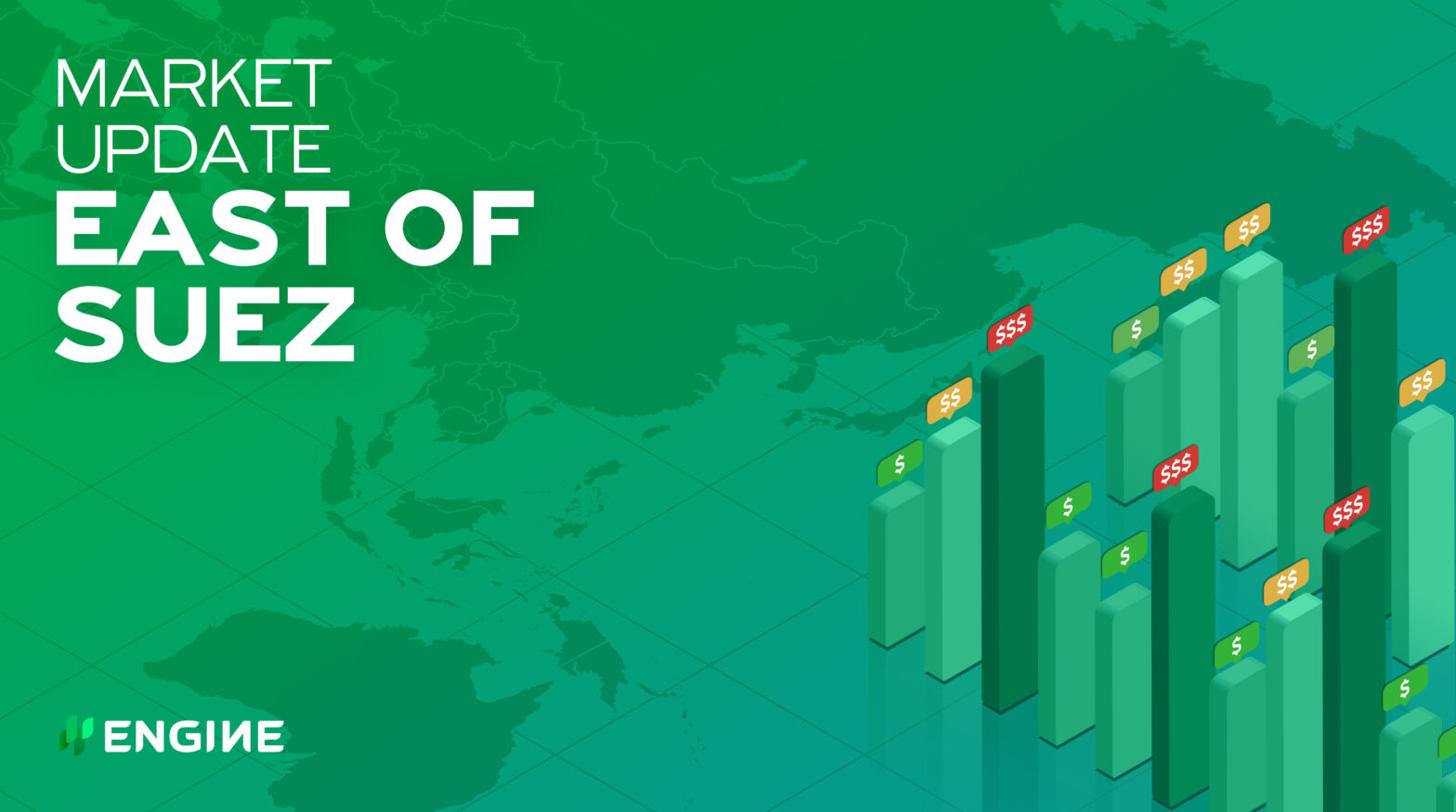Bunker prices have dropped across East of Suez ports today, as Brent has slipped by $2/bbl on the day.
Changes on the day to 16.00 SGT (08.00 GMT) today:
- VLSFO prices down in Fujairah ($11/mt), Zhoushan ($10/mt) and Singapore ($3/mt)
- LSMGO prices down in Fujairah ($14/mt), Singapore ($11/mt) and Zhoushan ($8/mt)
- HSFO380 prices down in Singapore ($17/mt), Zhoushan and Fujairah ($11/mt)
Singapore’s Hi5 spread has widened by $14/mt on the day, as HSFO380 saw a sharp drop on the day compared to a smaller one for VLSFO. VLSFO stems require lead times up to nine days ahead in the bunkering hub now. HSFO380 supply logistics remain under pressure the port, and around 7-8 days of lead time are required. LSMGO is slightly more readily available in Singapore at 4-6 days in advance.
VLSFO prices have edged down across all three ports today, with Zhoushan and Fujairah seeing steeper losses compared to Singapore. As a result, Zhoushan’s VLSFO price premium has flipped into a $4/mt discount to Singapore.
There have been no incoming HSFO cargoes in Zhoushan scheduled for October, with lead times stretching to five days in the Chinese port. At the same time, availability for the high sulphur fuel grade is good in Shanghai, where lead times stand at a shorter 2-3 days.
Brent
Front-month ICE Brent has shed $2.00/bbl on the day, to $78.27/bbl at 16.00 SGT (08.00 GMT) today.
Buying interest in the futures contract has waned after doubts about demand has resurfaced with the power crunch in China and an indicative build in US crude inventories.
Chinese power plants are running low on coal, which makes up a large share of feedstock for power generation. The shortage has triggered widespread rationing and millions of households have been affected. Investment bank Goldman Sachs estimates that nearly half of China’s industrial activity could feel the crunch, and has shaved 0.40% off its GDP growth forecast for China this year, now expecting growth at 7.80%.
How this will impact oil demand in China – the world’s biggest importer – is unclear. Diesel and other fuels could replace coal as feedstock for power generation and support prices, while lower overall growth and economic activity could dent fuel demand.
Brent was trading at three-year highs of more than $80/bbl before pulling back down below that mark yesterday.
“It’s likely that profit-taking is behind yesterday’s rejection after a good rally but we may have some stagnation around this level as investors weigh up where to go next,” says DailyFX analyst Daniela Sabin Hathorn.
Brent has also come under pressure from this week’s American Petroleum Institute (API) report showing a surprise build in US crude stocks. The stocks regained 4.13 million bbls to end seven weeks of draws. Gasoline and distillate fuel stockpiles grew, too, in a sign of lower demand, according to the indicative data, which normally precede official Energy Information Administration (EIA) figures by a day.
The EIA is due to release its weekly report today at 22.30 SGT (14.30 GMT).
